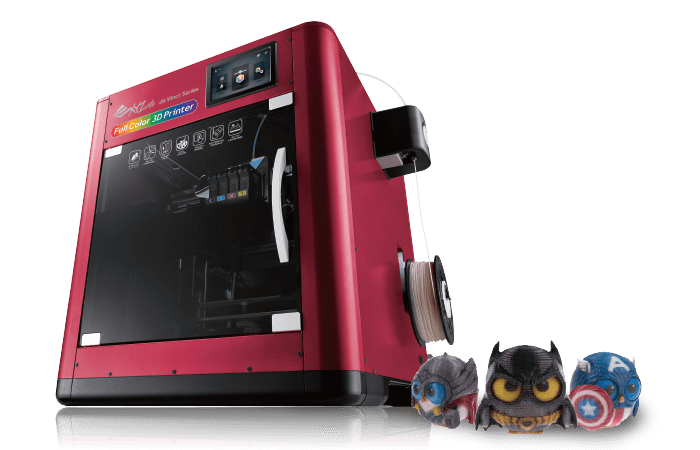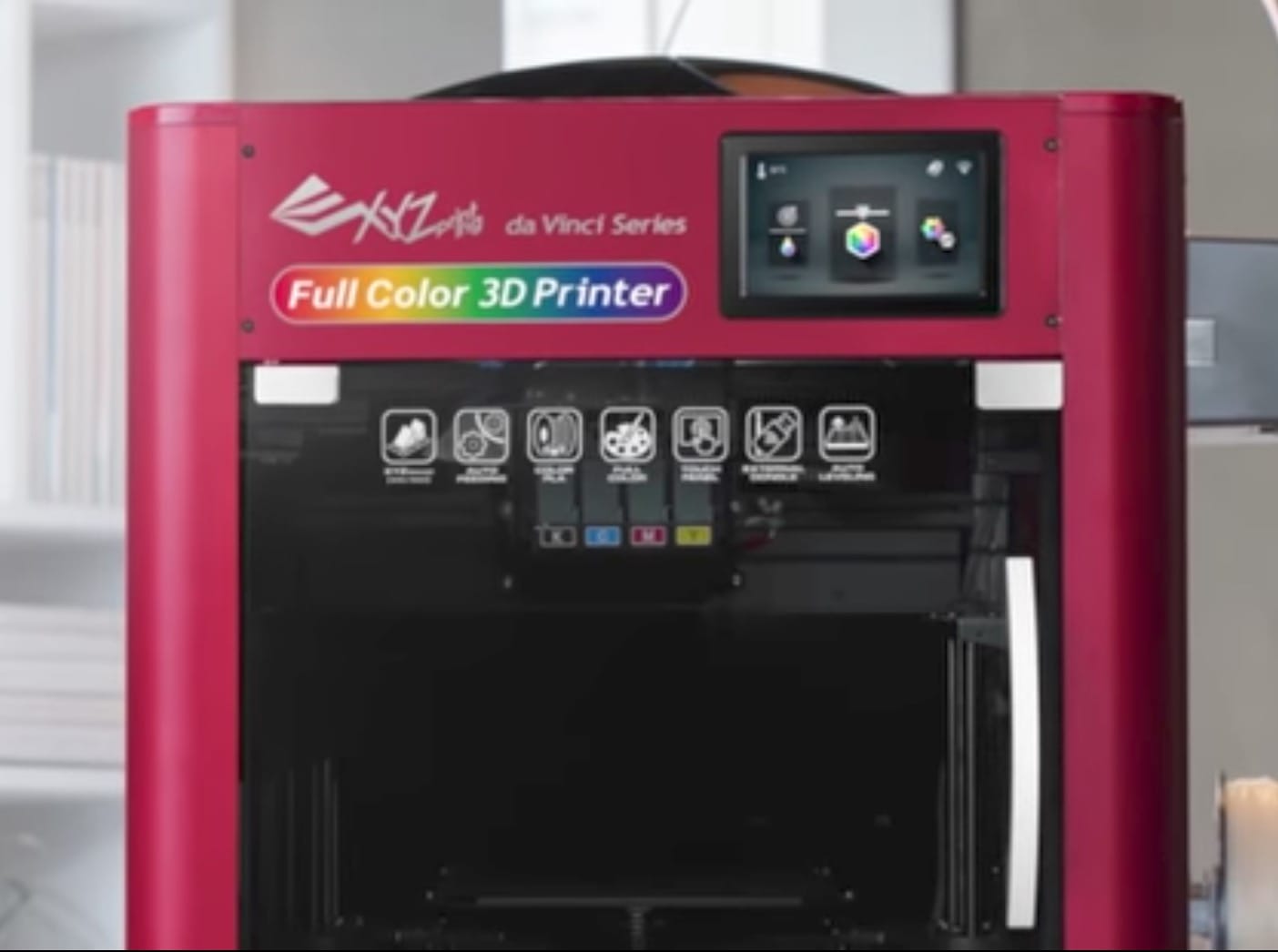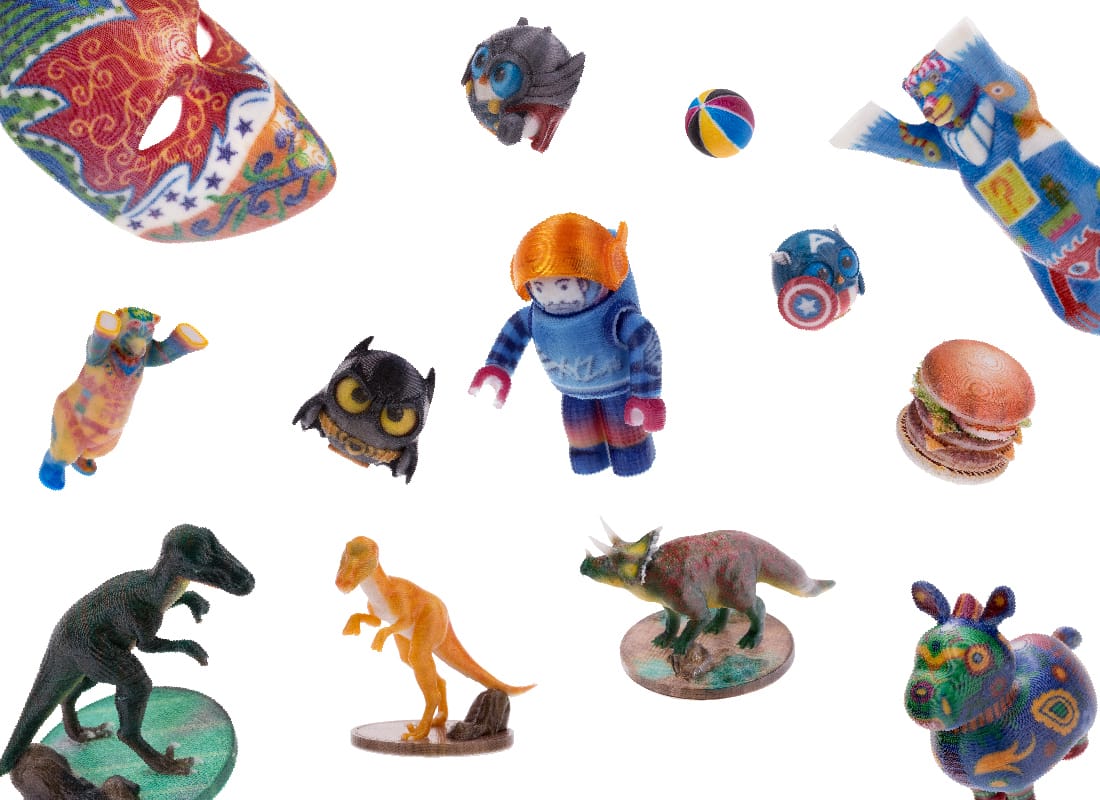
Yes, it’s another relatively inexpensive desktop 3D printer that’s capable of full color prints.
This time the machine comes from XYZprinting, who have announced the da Vinci Color, perhaps the most advanced desktop machine I’ve seen from the company. And it carries one of the most straightforward product names in XYZprinting’s lineup, which frequently includes difficult to distinguish cryptic names.
What do I mean by advanced? It seems this device has a unique combination of coloring hardware and matching materials. Here’s how it works.
A plain-colored filament is fed through the machine in the same manner you’d find in any plastic extrusion-style desktop 3D printer. However, as it passes through the extrusion system, an inkjet system applies a mix of colors to surface of the filament material. This ink follows through and becomes mixed with the softening plastic in the hot end to produce the desired color upon extrusion.
As the print proceeds, the inkjet can rapidly apply varying colors without need of pausing printing to “flush” the hot end of previous colors as is commonly done on the few other full color machine options that use a single extruder / multiple filaments approach. The ink is splashed on the filament in such a way as to get the correct color coming out of the hot end nozzle at just the right time.
I must say that this approach, that of “inking” the filament prior to extrusion, is not exactly new. There have been plenty of DIY approaches involving use of marker pens coloring filament as it enters the hot end. And there’s been at least two automated solutions, as well: one from Pirx, who currently seem to have disappeared, and another from Spectrom, who made an external device that would ink filament before it hit the 3D printer. That approach could theoretically work with any monochrome filament-based 3D printer, but alas, they have ALSO disappeared, it seems.
However, XYZprinting’s approach goes well beyond both of those attempts because their solution involves a new material called “CPLA”. They explain:
XYZprinting’s new material – CPLA (Color PLA) allows for the absorption of inkjet droplets, which is what makes the da Vinci Color able to print full-color prints. The CPLA filament is also sturdier than regular PLA, perfect for tooling, adhesion, and impact resistance. It’s versatility gives users the creative freedom to incorporate the material in any number of projects.
This solves a problem found with prior solutions: typical filament is not designed to absorb ink, and thus the previous methods were not always reliable. XYZprinting’s CPLA approach may solve that problem.

The da Vinci Color is otherwise a typical PLA-only 3D printer, with a build volume of 200 x 200 x 150 mm and a layer resolution of up to 0.100mm. While this unit does not include a heated print surface (definitely limiting it to PLA material only), it does include an enclosed build chamber and an auto-leveling feature that should simplify operations. The large color touch screen is also a premium feature.
Potential buyers should be aware that you will more than likely be able to obtain CPLA material from XYZprinting at whatever price they charge for it. Similarly, you’ll have to refill your inks as well, something you don’t normally do on a desktop 3D printer. It’s not clear to me what the price of either of these consumables might be. That said, XYZprinting has in the past not set outrageous prices for their other consumables, so the same might be expected here.
One issue I would look for when the machine is available for testing would be the precision of the color placement. If there is any “play” in the system between the inking and the extrusion, the colors may be slightly misaligned. However, the sample print images they’ve displayed appear pretty good. I’d also be interested in any number of error situations where the filament may slip, etc.

The machine is not quite available, as you can only pre-order a unit today at a price of USD$2,999. At that premium price point this item is well above the price of typical PLA-only 3D printers, which tend to be in the sub USD$1,000 range. In other words, would you pay USD$2,000 for the ability to 3D print in full color? Perhaps!

